#tec de monterrey
Text
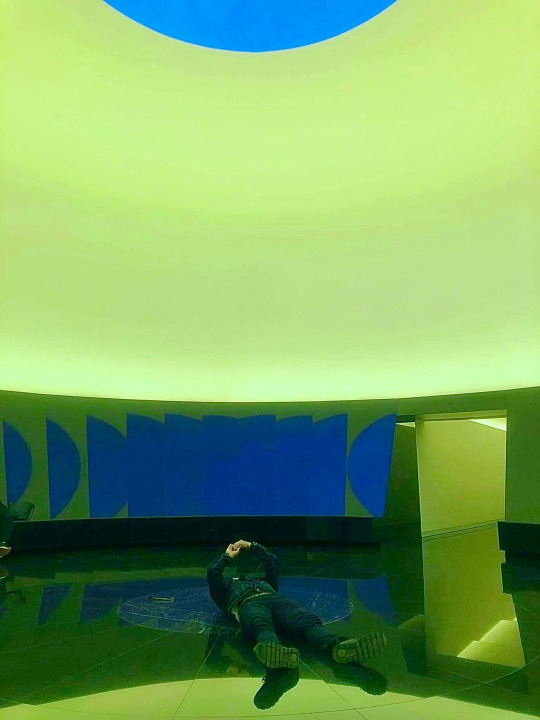
Shot by Diana L.
23 notes
·
View notes
Link
Humans have been manipulating live microorganisms to produce food for thousands of years: 2.000 years ago we started to produce bread from yeast. Since then, we learned biotechnology intuitively and without fully understanding the processes, though today is another story.

Tec de Monterrey's FEMSA Biotechnology Center carries out more than 200 projects a year. It has a staff of researchers from all over the country
What is biotechnology?
More than science fiction, biotechnology is a modern science whose foundations are based on technologies that exploit the biological mechanisms and interactions of living beings. And their applications promise to make life easier. We tell you why.
Applications of biotechnology
Biotechnology starts with the discovery of DNA structure to selectively modify the activity of living organisms. Thus, the design of microorganisms to achieve antibiotics, the creation of microbes to produce chemicals, and cultures of transgenic plants resistant to adverse climatic conditions are some of their applications. Biotechnology is part of a large part of industrial and pharmaceutical processes.
In Mexico, there is a place that has been dedicated to promoting this area of knowledge in Mexico. This is the FEMSA Biotechnology Center of the Tecnologico de Monterrey.
The Biotechnology Centre is a research space for the future. Its creation arose out of the efforts of researchers such as Mario Moises Alvarez and Marco Rito Palomares with the idea of doing science in the country.
"It was at a meeting of professors when the then rector Rafael Rangel Sostmann decided to bet on our work and our desire to do science," recalls Dr. Rito Palomares.
The project began with a modest laboratory equivalent to two classrooms on the Monterrey Campus. They had fewer than 10 students. “We were three researchers with the dream of generating a completely new building, and we started a funding campaign,” says Marco Rito.
One and a half years after the project began, they reached the goal of financing its construction. In a couple of years it was crystallized into what is now a five-level building, with first-world infrastructure, which has allowed it to attract talent from Mexico and the whole planet.
Improving the health of humanity
The Center focuses on nutrigenomics and bioprocesses—to build the foundations of the food of the future—as well as synthetic biology—to create products that can have a proven impact on health.
Their big bet is to develop pharmaceuticals and build the basis for food with cutting-edge and innovative research.
Nutrigenomics could help combat modern pandemics that now require reconciliation between the body and a diet as genes command it. Researchers yearn that we can have in a food the way to prevent cancer, or that in a simple salad there are all the nutrients and vitamins that our body requires.

The results could not only revolutionize the food industry, they would also mean considerable savings in public spending on health disorders around the world.
“The main concern is the identification of compounds that can be incorporated into food and that can have a proven impact on health. From a cookie or yogurt with unique antioxidant capabilities that stop cell deterioration,” explains Dr. Rito Palomares.
Institutional collaboration
Today, the FEMSA Center has a staff of more than 150 researchers who have been able to attract talent from all over the country. It also has a network of collaboration with other universities that is strengthened by the exchange of students, and the development and presentation of joint projects.
It also has different collaborations with universities such as the National Autonomous University of Mexico.
Unique achievements
Some credentials of this center are:
At CB-FEMSA, about 200 projects are carried out each year.
The investment for each project is between 100,000 to one million dollars.
Technology in drugs increases the efficiency and speed with which they act.
CB-FEMSA has obtained, in total, 100 patents in the areas of food, anticancer and antioxidant products, among others.
#🇲🇽#STEM#mexico#Mario Moises Alvarez#Marco Rito Palomares#Rafael Rangel Sostmann#mexican#latino#hispanic#biotechnology#food#Tec de Monterrey#FEMSA Biotechnology Center#nutrigenomics#bioprocesses#synthetic biology#Autonomous University of Mexico#UNAM
2 notes
·
View notes
Text
Jóvenes Potosinos Hacen Historia para México y Latinoamérica en Mundial de Robótica
San Luis Potosí, S.L.P., a 23 de abril de 2024.- LamBot 3478, equipo de robótica de PrepaTec Campus San Luis Potosí hizo historia para México y Latinoamérica al convertirse en el primer equipo en llegar a las finales de división dentro del Mundial de FIRST Robotics Competition que se disputó en Houston, Texas.
Tras conseguir el campeonato del Regional de Bayou con un registro impecable de 14…

View On WordPress
0 notes
Text

Redes humanas para aniversario tec 80
1 note
·
View note
Text
Celebran CICQ y Tec de Monterrey Simposio Internacional de Ingeniería Civil
El Colegio de Ingenieros Civiles del Estado de Queretaro (CICQ) y el Tec de Monterrey Campus Querétaro, inauguraron este lunes el Simposio Internacional de Ingeniería Civil y Sostenibilidad “SINCS’2023”, que se desarrolla 28 y 29 de Agosto en el Centro de Congresos del ITESM.La coordinadora de la Comisión Estatal de Infraestructura , Ing. Sonia Carrillo , en representación del Gobernador Mauricio…
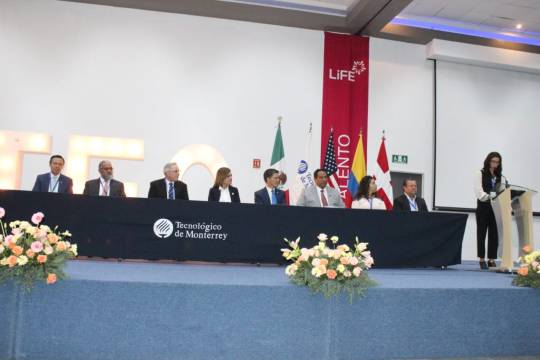
View On WordPress
1 note
·
View note
Text
Report of death of student at Tec de Monterrey
Monterrey, NL. A student from the Tecnológico de Monterrey died this Monday morning inside the Garza Sada campus in this capital city of Nuevo León, after fainting, which caused police mobilization and relief forces.
The report was given around 11 in the morning, when the 19-year-old girl was in the library of the educational institution.
According to a statement released by Tec de Monterrey,…

View On WordPress
0 notes
Text
¿El Ricky Ricón mexicano? Alumno llega en helicóptero al Tec de Monterrey y se viraliza
Estudiantes del Tec de Monterrey capturaron el peculiar momento en que el helicóptero aterrizó en medio del campus.
MONTERREY.- TikTok se ha convertido en la plataforma predilecta para documentar experiencias insólitas. Una de ellas fue la que ocurrió en el Tec de Monterrey, donde uno de sus alumnos llegó a clases a bordo de un helicóptero.
El Tecnológico de Monterrey es una de las instituciones más costosas en cuanto a colegiaturas. Fue fundado en 1943 con un sistema de carácter privado y sin fines de lucro…
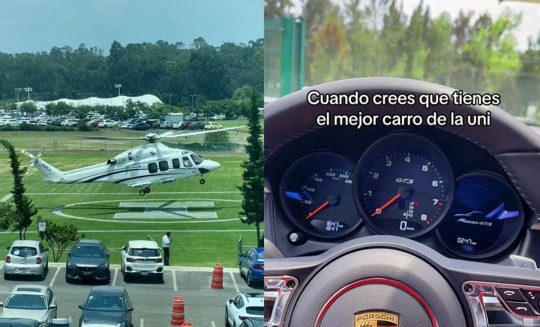
View On WordPress
0 notes
Text
tomorrow I'm either going into debt for around 50 thousand pesos OR I'm getting a nice little paper 😊 stay tuned!
#i had a course by the Tec de Monterrey which os a prestigious university#but im missing some homework#no odea of ill graduate until tomorrow 🥲🫠#idea*
0 notes
Video
Grissel Trujillo de Santiago was born in Chihuahua, Mexico and is a Professor at the School of Engineering and Sciences at Tecnológico de Monterrey. She was trained as a Chemistry & Pharmacy Biologist at Universidad Autónoma de Nuevo León (summa cum laude; 2008); she obtained her MSc degree in Biotechnology (summa cum laude) from Tecnológico de Monterrey (2009); and she received her PhD degree in Biotechnology from Tecnológico de Monterrey (2014).
Mexico - 3D Ears: A Biotechnological Hope
In Mexico, the region's first transplant was performed and the world's second transplant of a custom-designed three-dimensional ear with cartilage cells from a pediatric patient born with microtia.
Despite the fact that some time later the implant had to be removed from the recipient, this biotechnological feat offers hope that, in the future, more people will receive an ear transplant.
The leader of the interdisciplinary and research project of the National Rehabilitation Institute “Luis Guillermo Ibarra Ibarra” (INR), tells us about the possibilities of this project.
The first 3D transplanted ear
Microtia is a birth deformity in which the patient has a structure with a portion of the cartilage on the outside, known as the “peanut ear,” because the entire atrial pavilion is not formed. It mainly affects the Latin American and Asian population.
It is the second congenital malformation in Mexico, after cleft lip and palate and can occur on one side of the ear or both.
After years of basic research, in vitro trials, and animal model trials, the country underwent the first transplant to a nine-year-old pediatric patient with unilateral microtia.
However, it had to withdraw some time later because the patient had an infection, but the leader of the research project believes this exercise was successful because the implant itself was not rejected by the patient’s body and gave them many lessons for future interventions.
"When we questioned the patient and family we understood that he was wearing headphones, in addition, the patient touched themselves with dirty hands."
"Children are used to not having an atrial structure, when you put one on them, they tend to touch themselves a lot," explains the project leader.
Like many investigations, this advance met with a major obstacle: The pandemic. Today, four children are waiting for transplantation, with their ear ready, but due to health restrictions it has not been possible to carry out the surgery.
Microtia and child patients
In this first stage, in the INR only the child population is chosen because they are the most vulnerable, because at school age they face ridicule and accusations from their peers.
They must be patients with unilateral microtia who do not have developed ear canal (that is, who do not hear from that side).
"In this first stage it is an aesthetic reconstruction. And we think so because we have been working since 2004 with many tests and impediments in between.”
Children in general look like they have big ears because they have an atrial structure very close to the one they will reach in adulthood.
Ears growing on 3D supports
When an otolaryngologist determines that the patient's skin is in adequate condition for a transplant, a first surgery is done to remove cartilage cells or chondrocytes that are taken to the INR laboratory, where a standardized methodology for culturing cells is performed.
Subsequently, a tomography of the patient's contralateral ear is performed to design a similar 3D structure – not the same, no person has the same ears – for the missing ear.
The support on which chondrocytes will grow is a porous material. It has already been approved by the Federal Commission for Health Hazard Protection (COFEPRIS) and the U.S. Food and Drug Administration (FDA).
"This material is in the process of patenting, it is biodegradable, as the cells synthesize the extracellular matrix, the material degrades until the body eliminates it."
Once the structure reaches the proper shape and size, a second surgical intervention is performed in which the three-dimensional mold is placed and covered with the skin of the recipient.
Protocols
In this type of advances in which everything is new, many health protocols must be carried out that demonstrate their viability.
They first demonstrated that they had good laboratory and manufacturing practices that guaranteed the sterility of the area where chondrocytes would grow.
They obtained permission to extract cartilage cells from patients who would undergo another type of surgery to send them to pathology.
Then, cartilage cultures grew in vitro with microbiological safety conditions.
They performed concept tests on the back of atypical mice—a species characterized by thin, human-like skin—in these animals the human cells are compatible and do not cause rejection. Then came the authorization to transplant into humans.
Next Steps in Ear Transplantation
One of the problems is there is a global problem of scarcity.
With funding from the Ministry of Education, Science, Technology and Innovation of Mexico City, UNAM and INR bought a bioprinting machine, and the Autonomous Metropolitan University has another and will start collaborating.
Once they have the material and bioprinters produce the first designs, researchers will need to re-perform the described viability protocols, and once approved, they may move on to a second stage of adult ear transplants.
In other stages, the biotechnologist proposes that nanomaterials could be incorporated into the pinna that conduct sounds to the inner ear so that patients can hear.
This project involves specialists from Gea González Hospital and the INR.
#🇲🇽#Grissel Trujillo de Santiago#STEM#mexico#mexican educators#Tec de Monterrey#3D ear#medicine#microtia#National Rehabilitation Institute#INR#coronavirus#covid-19#otolaryngologist#Federal Commission for Health Hazard Protection#COFEPRIS#U.S. Food and Drug Administration#FDA#mexico city#UNAM#Ministry of Education Science Technology and Innovation#Autonomous Metropolitan University#Gea González Hospital
0 notes
Text

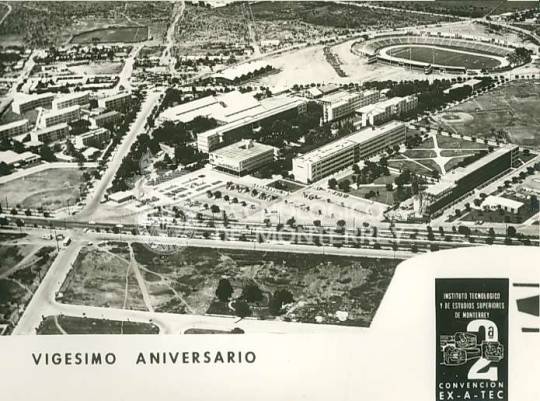
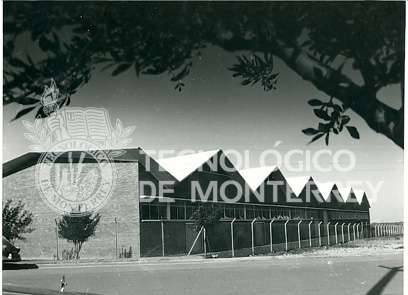

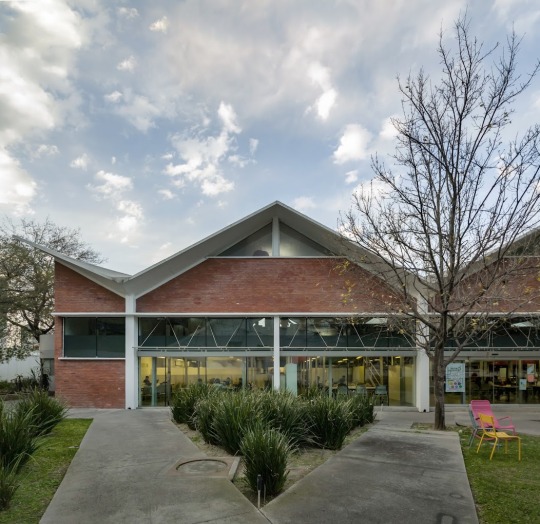




AR-1-Zona ITESM (1954-2023) Monterrey
Diseñado por Ing. Armando Ravizé en el año 1954, primeramente se llamaba Edificio de Planta Física.
En el 2004 el Arq. Agustín Landa Vértiz, diseña una remodelación al edificio re-nombrandolo AR-1-Zona. Y se le quedó como Arizona el nombre, y fue de 2004 a 2023 la Escuela de Arquitectura de ITESM.
En 2023 es demolido, terminando con icono y tal vez una de las mejores escuelas de arquitectura de la ciudad.
Para más información:
#Monterrey#ITESM#Escuela de Arquitectura#Patrimonio Moderno#Ing. Armando Ravizé#Tecnológico de Monterrey
94 notes
·
View notes
Text
En los funerales también se liga. Eli me dijo que ella se flechó con su esposo en un funeral.
En el funeral de mi tía llegaron los amigos de mis primos del Tec de Monterrey, la UVM y de escuelas privadas religiosas para hombres.
Reconocí algunos rostros que llegué a ver algunas veces en su casa o en fotos, cuando era adolescente o en mis inicios de los 20's.
Recordé especialmente a uno de ellos, que era roomie de uno de mis primos gemelos cuando decidió independizarse.
Lo conocí a los 22 años, no cruce palabra con él solo entró al depa saludo y se fue otra vez. Mi primo gemelo me invitó a conocer el Depa al que se acababa de mudar y me dijo, ven te presento a mi amigo, el sí te lo recomiendo.
Mis primos eran muy fiesteros, yo inmediatamente pensé que era uno más de sus amigos, "una especie de falso junior que se la pasaba de fiesta." Y le dije, "no gracias" a mi primo. Él me dijo que ya quisiera "que era abogado y trabajaba en una embajada o algo así".
Después de eso pensé que quizá sí era recomendable pero yo era una estudiante sin experiencia y él ya hasta vivía solo. Además, es 6 años mayor, aunque se veía más joven.
Ayer acudió al funeral de mi tía Rosy, se veía casi de la misma edad de hace como 12 años, se me hizo más fresa que la primera vez que lo conocí con su look sport Abercrombie, se me quedaba viendo mucho. Siento que sí me veía en plan de ligue porque también me le quedé viendo para ver qué hacía y no le importaba mucho, tenía esa mirada clásica y postura erguida de un hombre cazador, pero con fachada de niño inocente.
Al final me di cuenta que venía con una chica. ¿Su novia?¿Su esposa? ¡Qué importa! Al final estaba viendo a otra mujer mientras venía con alguien.
0 notes
Text
Impulsa titular del IVEQ el proyecto Cimentando el Mañana
La directora del Instituto de la Vivienda del Estado de Querétaro (IVEQ), Lorena García Alcocer, anunció el arranque de un nuevo proyecto denominado “Cimentando el Mañana”, el cual pretende beneficiar, en una primera etapa, a 60 familias que participaron en el programa “Contigo por tu vivienda” en la modalidad de autoproducción en los municipios.
La funcionaria explicó que el proyecto tiene como…

View On WordPress
0 notes








